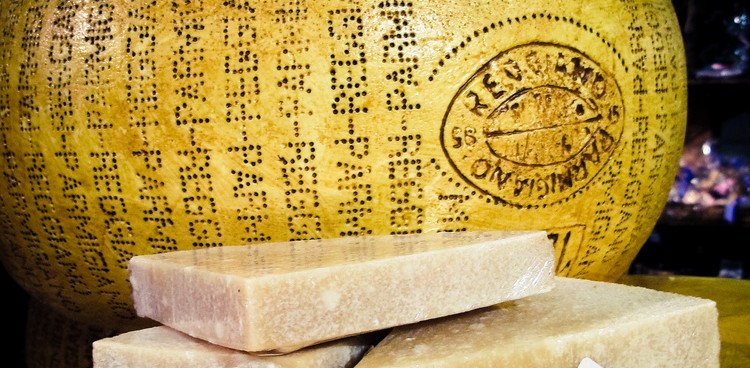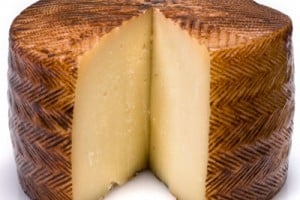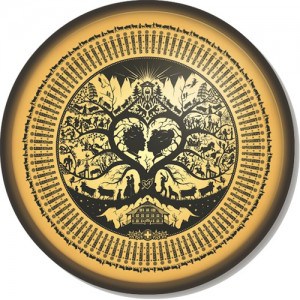
Of course a cheese’s personality is largely dependent on the taste, texture, aroma, and ingredients that go into it, but there are other parts of a cheese’s story that contribute to its character. In this blog series, Natalie investigates the distinct personality traits of some of the most unique cheeses out there.
In a practical sense, cheese rinds can be used to communicate something about a cheese. But as with most forms of communication, you can get creative with it. Some cheeses have manmade rinds that look good enough to display in a frame.
A lot of the wheels that have distinct branding are Protected Designation of Origin cheeses. This means that the cheese has to be produced in a certain part of the world, in a certain specific way. Cheeses like Parmigiano Reggiano and Pecorino Romano are PDO (called DOC in Italy).
Parmesan
Any Parmesan lover would recognize that rind. The pin dot pattern, which is embossed around the wheel using a flexible stamp, instantly evokes dry, crumbly, salty memories. One of the other markings Parmesan gets is a date of production stamp, along with a number denoting the cheese house that made it. Parmesan wheels only earn the brand of authentic Parmigiano Reggiano if they pass inspection by a member of the consortium that protects its regulated status.
Pecorino
Because what gives these cheeses their personality is their place of origin, the rind is often branded with very text-based imagery. Cheese wheels are usually sliced and split up into smaller pieces, so the cheese’s logo has to appear repeatedly to be sure that it’ll show up on every wedge. The repetitive nature of the text on the rinds often ends up being rather textile-like in appearance.
Sometimes, this black rind effect is done with a Plasticoat, which is a liquid that is painted onto the outside of the cheese to allow for moisture to escape. A textual pattern can be imprinted onto the rind during this proccess. If there are indentations on the surface of the Plasticoat, mold can develop in those areas, creating the white areas on the rind.
Manchego
Rind artwork can also go beyond text-based imagery to tell us something about where the cheese came from. Makers of Manchego traditionally used woven esparto grass braids to shape the curd, forming a mold that channeled moisture out from the cheese. The striations on the rind are still a recognizable marker of Manchego and other Spanish cheeses today.
Emmentaler
Some cheese even offers up its rind as a blank canvas for intricate stamp and stencil artwork. This wheel of Emmentaler was designed to tell the story of a local play that was coming out in Switzerland. Emmentaler is a PDO cheese, but its mark of authenticity is not what takes center stage on this rind.
So don’t just toss your rinds—appreciate them! They tell you a lot about the cheese, help age it, and even give it some extra visual appeal. Plus, Parmigiano Reggiano rinds can do wonders when added to a soup broth.
Don’t miss my next post on the personality of alcohol marbled cheeses.
Photo Credit: abbyladybug via Compfight cc












